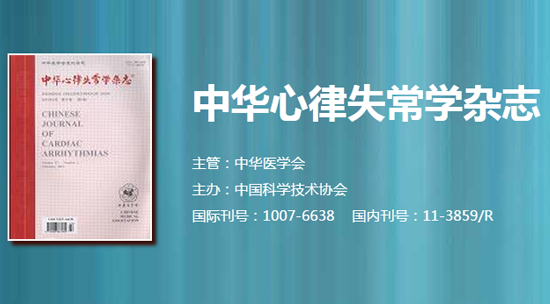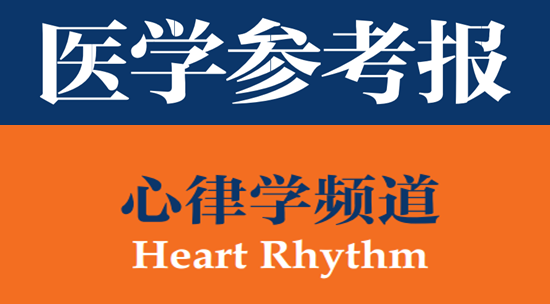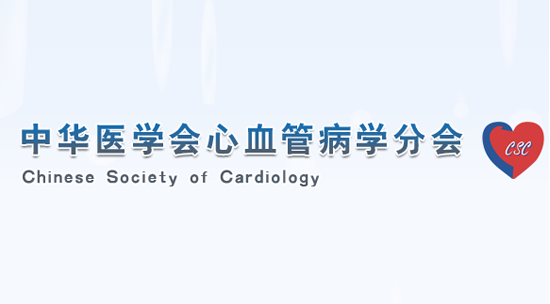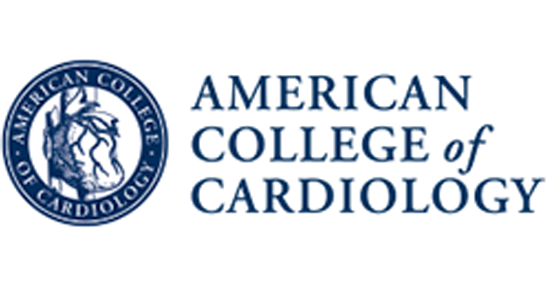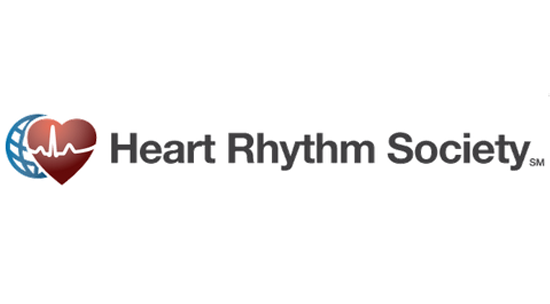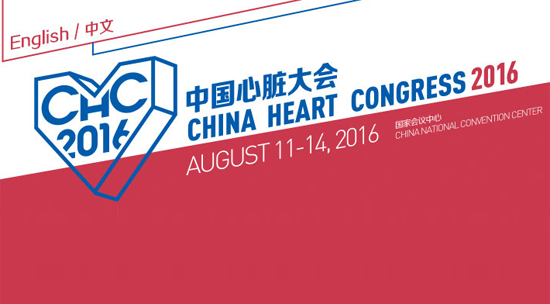HeartRhythm主编—陈鹏生教授语音速递(十月刊 英文版)
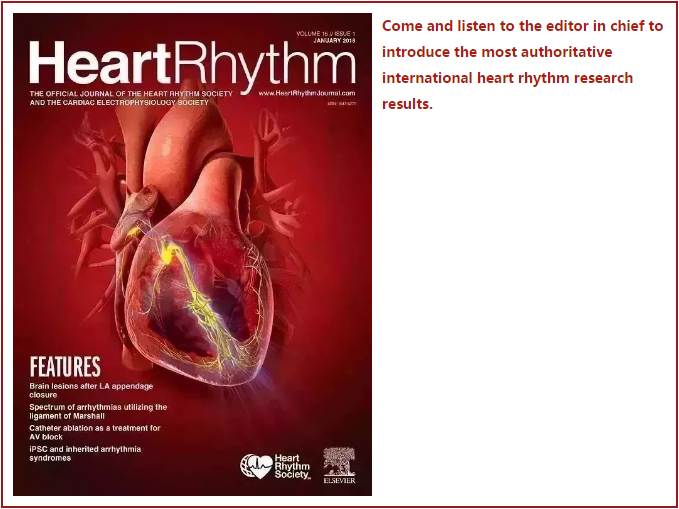

1
The featured article is “A Multicenter prospective observational long-term follow up study of endocardial cardiac resynchronization therapy using the Jurdham procedure” by Elencwajg et al from Buenos Aires, Argentina. An author interview conducted by our>
2
This issue is a focus issue>Risk factors for Lethal Arrhythmic Events in Children and Adolescents with Hypertrophic Cardiomyopathy and an Implantable Defibrillator: An International Multi-Center Study” by Balaji et al from Oregon Health Sciences University. The authors performed a retrospective data collection>
3
Next up is “Ethnic differences in patients with Brugada syndrome and arrhythmic events” by Milman et al from the Chaim Sheba Medical Center, Israel. The authors performed a survey>
4
Costa et al from St Thomas’ Hospital, London wrote the following article titled “Pacing in proximity to scar during cardiac resynchronization therapy increases local dispersion of repolarization and susceptibility to ventricular arrhythmogenesis.” Imaging data from ischemic cardiomyopathy patients undergoing CRT were used to create patient-specific LV anatomical computational models including scar morphology. The authors found increased dispersion of repolarization in the vicinity of the scar and widening of the vulnerable window when pacing in proximity to scar. These findings provide a mechanistic explanation for VT induction in ischemic cardiomyopathy patients with CRT with lead placement proximal to scar. The authors suggest that pacing at least 3.5 cm away from scar may avoid increasing VT risk in these patients. That hypothesis will need to be tested by clinical studies.
5
The next paper is “Catheter Ablation versus Medical Therapy for Treatment of Ventricular Tachycardia associated with Structural Heart Disease” This review and Meta-analysis article was written by Anderson et al from Royal Melbourne Hospital, Australia. The meta- analysis of randomized clinical trial data shows that catheter ablation is superior to medical therapy for predominantly post infarct, scar-related VT in terms of VT recurrence and electrical VT storm, with no reduction in mortality. Real world observational studies demonstrate significant reduction in VT recurrence and mortality. These data show that catheter ablation reduces VT recurrences, but the mortality benefit will need to be tested with larger trials and pre-determined standardized protocols.
6
Shamloo et al from University of Leipzig, Germany wrote the following paper titled “Epicardial Adipose Tissue Thickness as an Independent Predictor of Ventricular Tachycardia Recurrence Following Ablation.” The authors studied 61 consecutive patients. Pre-procedural cardiovascular MRI was used to estimate epicardial adipose tissue thickness. After more than a year of follow up, about 25% of patients had VT recurrences. Epicardial adipose tissue thickness at the right and left AV grooves was significantly higher in the VT recurrence group than in those without recurrent VT. The epicardial adipose thickness may be a new imaging marker for risk stratification for post-ablation VT recurrence. This new finding needs to be tested with a prospective study.
7
Next up is a review article titled “Cardiac Sympathetic Denervation for Refractory Ventricular Arrhythmias in Patients with Structural Heart Disease” by Shah et al from Johns Hopkins University. They reviewed 13 studies totaling 173 patients. Overall freedom from events ranged from 58% to 100%. They conclude that cardiac sympathetic denervation reduced the number of ventricular arrhythmic events in patients with structural heart diseases. Major post-procedural complications were infrequent and often transient. These findings support the continued research of sympathetic denervation in ventricular arrhythmia control.
8
The next article is by Martins et al from the University of Rennes, France, titled “Incidence, predictors and clinical impact of electrical storm in patients with left ventricular assist devices: new insights from the ASSIST-ICD study”. Of 652 patients with an LVAD, about 10% presented with electrical storm during a median follow-up period of 9 months. Patients experiencing electrical storm had a significantly lower 1-year survival rate than did those who were free from electrical storm. Because of the poor prognosis, the authors wonder whether VT ablation in addition to drug therapy should be attempted to improve outcomes in these patients.
9
Dong et al from Fuwai Hospital, in Beijing, China wrote the following article titled “Catheter Ablation of Ventricular Arrhythmias Originating From the Junction of Pulmonary Sinus Cusp Via A Nonreversed U Curve Approach.” Of 125 consecutive patients with right ventricular outflow tract ventricular arrhythmias, 17, or 14%, had an anatomic origin at the pulmonary sinus cusp. Among them, 14 out of the 17 underwent successful ablation via non- reversed U curve after failed reversed U curve ablation. The authors conclude that the pulmonary sinus junction is a non-rare but distinct origin of RVOT-type ventricular arrhythmias. The non-reversed U curve approach is a more feasible alternative than the reversed U curve approach for these arrhythmias. These techniques may be useful in difficult RVOT ablation procedures.
10
The next paper is titled, “Incidence of myopotential induction in Subcutaneous Implantable Cardioverter Defibrillator patients“ by van den Bruck et al from the University of Cologne, Germany. The authors systematically assessed 41 patients during various exercises. In nearly all patients, myopotentials were inducible. The myopotentials predominantly led to undersensing, but in up to 22% of patients, myopotential-induced oversensing occurred. However, these oversensing episodes did not lead to tachycardia detection. These results suggest that myopotential induction maneuvers might be beneficial to further reduce the risk of malfunction or inadequate therapy after S-ICD implantation.
11
Next up is “Time to therapy delivery and effectiveness of Subcutaneous Implantable Cardioverter-Defibrillator” by Diemberger et al of University of Bologna, Italy. The authors analyzed defibrillation testing in 570 patients from 53 Italian centers. The mean time to therapy exceeded 18 seconds in>
12
The final article of the sudden death focus issue is a contemporary review titled “How to Use the 12-lead ECG to Predict the Site of Origin of Idiopathic Ventricular Arrhythmias” by Enriquez et al from Queen’s University, Canada. The authors suggest a stepwise anatomical approach for localization of idiopathic ventricular arrhythmias based>
13
The first paper of the regular part of the issue is written by Hu et al from Fuwai Hospital, Beijing, China Titled “Right anterior ganglionated plexus: the primary target of cardioneuroablation?” The authors studied 115 consecutive patients with vasovagal syncope who underwent cardioneuroablation. During ablation of right anterior ganglionated plexus (RAGP), heart rate increased from 61 to 82, while there were just vagal response observed during ablation of other GPs. The heart rate effects remains during follow up. The authors conclude that cardioneuroablation via GP ablation in the LA effectively inhibited the recurrence of vasovagal syncope. Ablation of the RAGP increased heart rate immediately, and this effect remained during follow up. This finding suggests that RAGP ablation may increase heart rate in patients with vasovagal syncope or bradyarrhythmias.
14
The next paper is “Outcomes Of His Bundle Pacing Upgrade After Long-term Right Ventricular Pacing And / Or Pacing-Induced Cardiomyopathy: Insights Into Disease Progression.” His bundle pacing was attempted in patients with longstanding AV block and chronic RV pacing and/or pacing-induced cardiomyopathy in need of resynchronization therapy. His bundle pacing was successful in over 90% of patients and shortened the QRS duration, eliminated T wave memory, and improved LV ejection fraction. These findings indicate that electrical and structural changes induced by chronic RV pacing were consistently reversed with His bundle pacing.
15
Mountantonakis et al from New York wrote the following article titled “Conduction Patterns of Idiopathic Arrhythmias from the Endocardium and Epicardium of Outflow Tracts: New Insights with Non-Invasive Electroanatomic Mapping.” The authors performed non-invasive electroanatomical mapping in 31 patients. They also used the maximum deflection index to predict an epicardial site of origin versus non-epicardial origin. They found that arrhythmias arising from the outflow tracts follow distinct propagation patterns depending upon the origin. A 2-step algorithm using activation timing by non-invasive electroanatomical mapping yields 100% diagnostic accuracy in predicting the site of origin. In contrast, maximum deflection index failed to differentiate between epicardial origin and non-epicardial origin.
16
The next paper is “Fluctuations in premature ventricular contraction burden can impact medical assessment and management” by Mullis et al from University of Kentucky. The authors analyzed 14-day ambulatory cardiac monitors from 59 patients. There was a 2.45-fold difference between the maximum 24-hour PVC burden and minimum 24-hour burden in the same patient. These findings indicate that there is significant variation in the 24-hour PVC burden when measured over a 14-day period among patients with PVC burden >5%. This variability might impact critical clinical decisions in a significant proportion of such patients. An implication of the study is that a single 24-hour Holter monitoring cannot be used to rule out PVC induced cardiomyopathy.
17
Next up is a basic science investigation titled “Regulation of TRPC1 channel by endothelin-1 in human atrial myocytes” by Zhang et al from Xiamen University, China. The authors previously reported that the transient receptor potential channel 1, or TRPC1, mediates nonselective cation current that can be activated by endothelin-1 in human atrial myocytes. They performed further studies in human atrial cells with patch clamp techniques and demonstrated that TRPC1 activation by endothelin-1 is mediated by PKC through the distinct phospholipid pathways. They also showed that TRPC1 channel and endothelin-1 type A receptor are upregulated in atria with AF. These changes may be in part responsible for atrial electrical remodeling in patients with AF.
18
The next article is a contemporary review>ECG-based Cardiac Screening Programs: Legal, Ethical and Logistical Considerations”, written by Orchard et al from University of Sydney, Australia. Screening asymptomatic people with a resting ECG has been theorized to detect latent cardiovascular disease. The authors provided an in-depth look at various aspects of this controversial theory.
19
The HRS 40th Anniversary Viewpoints was written by Dr Frank Marcus of the University of Arizona, titled “Historical Aspects of the Use of Radiofrequency Energy to Treat Arrhythmias.” He describes how RF energy was first used to treat cardiac arrhythmias. This paper is definitely worth reading by all who perform RF catheter ablation procedures.
I hope you enjoyed this podcast. For Heart Rhythm, I’m Editor-In-Chief, Dr. Peng-Sheng Chen.
